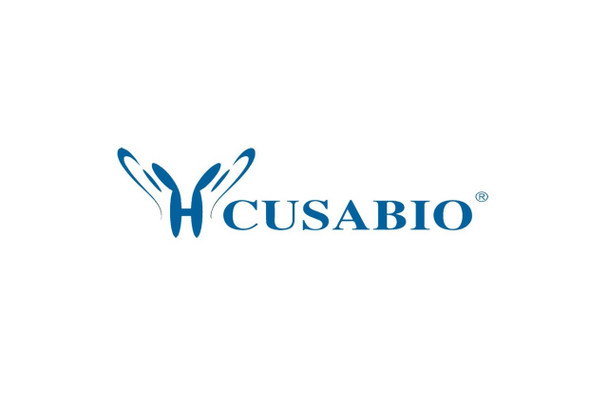Cusabio Human Recombinants
Recombinant Human Apoptosis-enhancing nuclease (AEN), partial | CSB-EP819883HU
- SKU:
- CSB-EP819883HU
- Availability:
- 13 - 23 Working Days
Description
Recombinant Human Apoptosis-enhancing nuclease (AEN), partial | CSB-EP819883HU | Cusabio
Alternative Name(s): Interferon-stimulated 20KDA exonuclease-like 1
Gene Names: AEN
Research Areas: Cell Biology
Organism: Homo sapiens (Human)
AA Sequence: MVGTGPRGRVSELARCSIVSYHGNVLYDKYIRPEMPIADYRTRWSGITRQHMRKAVPFQVAQKEILKLLKGKVVVGHALHNDFQALKYVHPRSQTRDTTYVPNFLSEPGLHTRARVSLKDLALQLLHKKIQVGQHGHSSVEDATTAMELYRLVEVQWEQQEARSLWTCPEDREPDSSTDMEQYMEDQYWPDDLAHGSRGGAREAQDRRN
Source: E.coli
Tag Info: N-terminal 6xHis-SUMO-tagged
Expression Region: 117-325aa
Sequence Info: Partial
MW: 40.1 kDa
Purity: Greater than 90% as determined by SDS-PAGE.
Relevance: Exonuclease with activity against single- and double-stranded DNA and RNA. Mediates p53-induced apoptosis. When induced by p53 following DNA damage, digests double-stranded DNA to form single-stranded DNA and amplifies DNA damage signals, leading to enhancent of apoptosis.
Reference: Zhang W., Li N., Wan T., Chen T., Zhang J., Cao X.Analysis of the DNA sequence and duplication history of human chromosome 15.Zody M.C., Garber M., Sharpe T., Young S.K., Rowen L., O'Neill K., Whittaker C.A., Kamal M., Chang J.L., Cuomo C.A., Dewar K., FitzGerald M.G., Kodira C.D., Madan A., Qin S., Yang X., Abbasi N., Abouelleil A. , Arachchi H.M., Baradarani L., Birditt B., Bloom S., Bloom T., Borowsky M.L., Burke J., Butler J., Cook A., DeArellano K., DeCaprio D., Dorris L. III, Dors M., Eichler E.E., Engels R., Fahey J., Fleetwood P., Friedman C., Gearin G., Hall J.L., Hensley G., Johnson E., Jones C., Kamat A., Kaur A., Locke D.P., Madan A., Munson G., Jaffe D.B., Lui A., Macdonald P., Mauceli E., Naylor J.W., Nesbitt R., Nicol R., O'Leary S.B., Ratcliffe A., Rounsley S., She X., Sneddon K.M.B., Stewart S., Sougnez C., Stone S.M., Topham K., Vincent D., Wang S., Zimmer A.R., Birren B.W., Hood L., Lander E.S., Nusbaum C.Nature 440:671-675(2006)
Storage: The shelf life is related to many factors, storage state, buffer ingredients, storage temperature and the stability of the protein itself. Generally, the shelf life of liquid form is 6 months at -20?/-80?. The shelf life of lyophilized form is 12 months at -20?/-80?.
Notes: Repeated freezing and thawing is not recommended. Store working aliquots at 4? for up to one week.
Function: Exonuclease with activity against single- and double-stranded DNA and RNA. Mediates p53-induced apoptosis. When induced by p53 following DNA damage, digests double-stranded DNA to form single-stranded DNA and amplifies DNA damage signals, leading to enhancement of apoptosis.
Involvement in disease:
Subcellular Location: Nucleus, Nucleus, nucleolus
Protein Families:
Tissue Specificity:
Paythway:
Form: Liquid or Lyophilized powder
Buffer: If the delivery form is liquid, the default storage buffer is Tris/PBS-based buffer, 5%-50% glycerol. If the delivery form is lyophilized powder, the buffer before lyophilization is Tris/PBS-based buffer, 6% Trehalose, pH 8.0.
Reconstitution: We recommend that this vial be briefly centrifuged prior to opening to bring the contents to the bottom. Please reconstitute protein in deionized sterile water to a concentration of 0.1-1.0 mg/mL.We recommend to add 5-50% of glycerol (final concentration) and aliquot for long-term storage at -20?/-80?. Our default final concentration of glycerol is 50%. Customers could use it as reference.
Uniprot ID: Q8WTP8
HGNC Database Link: HGNC
UniGene Database Link: UniGene
KEGG Database Link: KEGG
STRING Database Link: STRING
OMIM Database Link: OMIM









